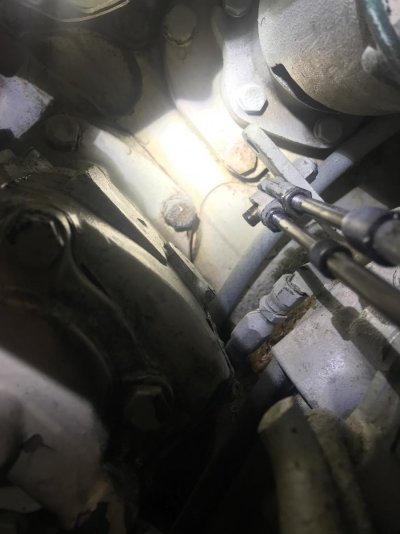oscar
Guru
- Joined
- Oct 22, 2015
- Messages
- 1,098
- Location
- United States
- Vessel Name
- Lady Kay V
- Vessel Make
- 1978 Hatteras 53MY
There's a saying in aviation that checklists are written in blood. I have a checklist on the boat. It's flow is just like it was in the cockpit...... Before Start-After Start-Before Shutdown etc.... It contains items out of the Hatteras manual and my add ons. It is updated regularly. I print it, I laminate it and I use it. Every time.
$0.69 is what I paid for the part missing in the picture below.......
I don't know how long it's been like that. One of the challenges doing checklists in the cockpit was always to not just LOOK but to SEE. Devious simulator instructors would put something out of place and if you said "CHECK" he would stop the proceedings and say....."IS IT?" So I try to LOOK AND SEE, every time. So maybe it just happened, maybe I finally caught it. But the bottom line is that I caught it, and fixed it.
$0.69 is what I paid for the part missing in the picture below.......
I don't know how long it's been like that. One of the challenges doing checklists in the cockpit was always to not just LOOK but to SEE. Devious simulator instructors would put something out of place and if you said "CHECK" he would stop the proceedings and say....."IS IT?" So I try to LOOK AND SEE, every time. So maybe it just happened, maybe I finally caught it. But the bottom line is that I caught it, and fixed it.

